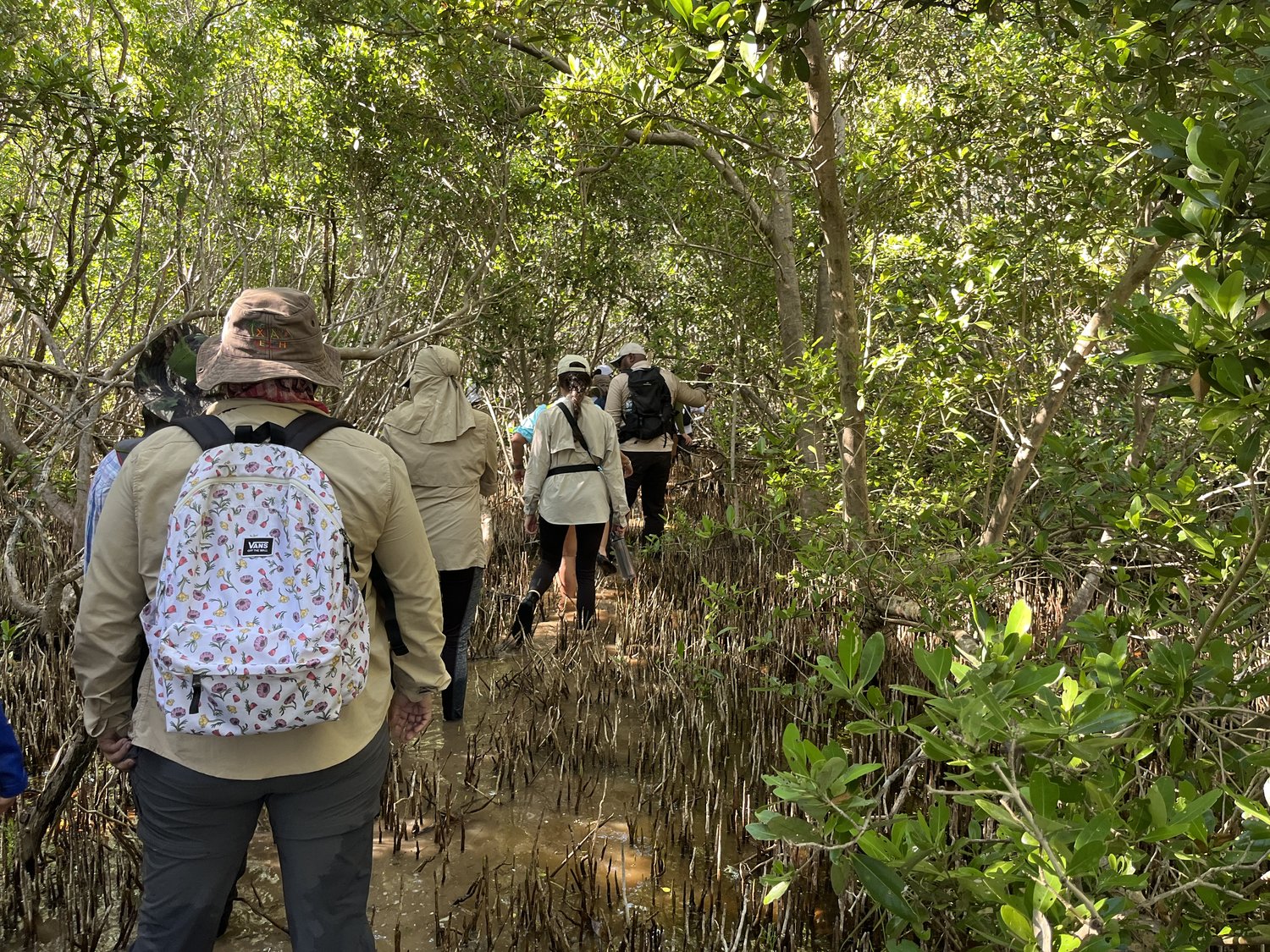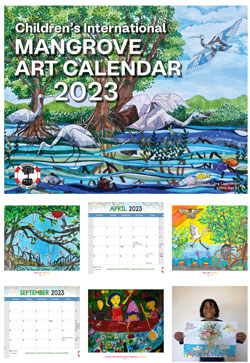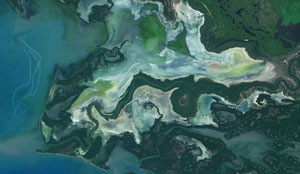MAP News Issue #566 – Feb 25, 2023
The MAP News | |
FEATURE STORY Report Launch | Forest politics in Indonesia: Drivers of deforestation and dispossession  E.U. – Join online or at the University of Amsterdam in March 2, 9:30am (CET) to listen to high level speakers discussing the role political dynamics play in resource management in Indonesia. The report brings together a wide range of recent studies on the competitive struggle over control of land, timber and other resources in Indonesia’s forest zones, providing an accessible guide to the practices and incentives generated by the country’s ‘Forest Politics.’ The report shows that informal relations between political, bureaucratic and economic actors are a common feature of governance in Indonesia. The challenge of fostering sustainable development will require grappling with the daunting task of working towards systemic reform. The discussion will cover the negative consequences of the current political dynamics, as well as exploring possible ways to make progress towards better management of Indonesia’s natural resources. E.U. – Join online or at the University of Amsterdam in March 2, 9:30am (CET) to listen to high level speakers discussing the role political dynamics play in resource management in Indonesia. The report brings together a wide range of recent studies on the competitive struggle over control of land, timber and other resources in Indonesia’s forest zones, providing an accessible guide to the practices and incentives generated by the country’s ‘Forest Politics.’ The report shows that informal relations between political, bureaucratic and economic actors are a common feature of governance in Indonesia. The challenge of fostering sustainable development will require grappling with the daunting task of working towards systemic reform. The discussion will cover the negative consequences of the current political dynamics, as well as exploring possible ways to make progress towards better management of Indonesia’s natural resources.
AFRICA FAO to support mangrove ecosystem management in nine cities
AMERICANicaraguan women dig for cockles and save mangrove forests
Mangroves for Community and Climate: Adapting in Harmony with Nature Florida Senate Bill Seeks to Revitalize Mangrove Forests in Biscayne Bay and Beyond 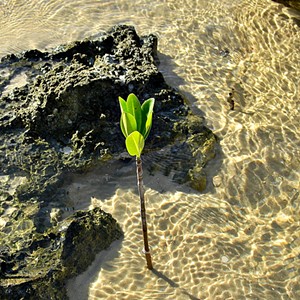 USA – Florida’s mangroves play a key role in the health of the state’s coastal ecosystems, serving as nurseries for marine animals and providing a first line of defense against coastal erosion and storm surge. Around Biscayne Bay, the aquatic plant has been losing ground over the years as a result of urban expansion. Mangrove forests were viewed as a nuisance and targeted for mass elimination during development booms of decades past, leaving a small fraction of the habitats that once lined Miami’s waterways. Though mangrove loss has since slowed, Hurricane Irma and other powerful storms have dealt a blow to regrowth of the forests. For the second year in a row, State Senator Ileana Garcia is seeking to buff up Florida’s mangrove law in an effort to revitalize the plant’s presence statewide. She recently introduced SB 100, a bill that would bolster mangrove conservation through the Florida Department of Environmental Protection. The current version of the statute regulates trimming, removal, and alteration of mangroves in Florida. USA – Florida’s mangroves play a key role in the health of the state’s coastal ecosystems, serving as nurseries for marine animals and providing a first line of defense against coastal erosion and storm surge. Around Biscayne Bay, the aquatic plant has been losing ground over the years as a result of urban expansion. Mangrove forests were viewed as a nuisance and targeted for mass elimination during development booms of decades past, leaving a small fraction of the habitats that once lined Miami’s waterways. Though mangrove loss has since slowed, Hurricane Irma and other powerful storms have dealt a blow to regrowth of the forests. For the second year in a row, State Senator Ileana Garcia is seeking to buff up Florida’s mangrove law in an effort to revitalize the plant’s presence statewide. She recently introduced SB 100, a bill that would bolster mangrove conservation through the Florida Department of Environmental Protection. The current version of the statute regulates trimming, removal, and alteration of mangroves in Florida..
ASIA Mangrove restoration gives hope to Indonesia’s sinking shores  INDONESIA – On World Wetlands Day, we look at how communities in Indonesia are turning to mangroves to buffer themselves against rising seas and more intense storms. In a village on the Indonesian island of Java, eight men are wielding saws and machetes with practiced precision, preparing long bamboo poles that they will use to defend their embattled community. The men are fighting back against the erosion and rising sea levels that have swallowed up vast areas of land along Java’s north coast, including in their home district of Demak. Key to their strategy is restoring a protective belt of mangroves. “To do this, we create traps for sediment from local bamboo and nets,” explained Ahmad Busro, a community leader, as the poles piled up behind him. “The hope is that when enough sediment accumulates, seeds that naturally drop off the mangrove can settle and grow.” This innovative approach to mangrove restoration is part of a multipronged effort pioneered by Wetlands International to harness the power of nature to benefit both people and nature. INDONESIA – On World Wetlands Day, we look at how communities in Indonesia are turning to mangroves to buffer themselves against rising seas and more intense storms. In a village on the Indonesian island of Java, eight men are wielding saws and machetes with practiced precision, preparing long bamboo poles that they will use to defend their embattled community. The men are fighting back against the erosion and rising sea levels that have swallowed up vast areas of land along Java’s north coast, including in their home district of Demak. Key to their strategy is restoring a protective belt of mangroves. “To do this, we create traps for sediment from local bamboo and nets,” explained Ahmad Busro, a community leader, as the poles piled up behind him. “The hope is that when enough sediment accumulates, seeds that naturally drop off the mangrove can settle and grow.” This innovative approach to mangrove restoration is part of a multipronged effort pioneered by Wetlands International to harness the power of nature to benefit both people and nature.
Mangrove restoration should include social aspects, involve community — study 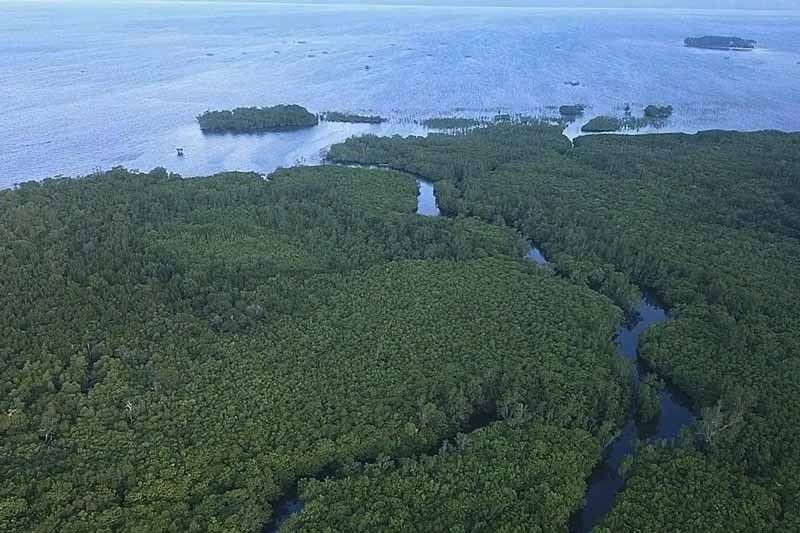 PHILIPPINES – Studies on mangrove restoration need to be more inclusive and also include the social attributes of this important ecosystem to improve how conservation is done across Southeast Asia, scientists from the University of the Philippines said. A study published by by UP Diliman Institute of Biology Associate Professor Dr. Severino Salmo III and biology graduate student Maria Elisa Gerona-Daga and published in Frontiers and Marine Science found that most publications on mangrove restoration assessed ecological attributes, around three times more than those that linked restoration to social aspects. Most of the studies that assessed social attributes were focused on the economic value of mangrove ecosystems and their services (24%), on the role of different sectors in mangrove restoration and management (23%), and on policies and governance (20%). Community-based restoration (15%), eco-cultural practices (14%), and environmental education (5%) were relatively less studied. Island biogeography graduate student Mark Angelo Bucay said the paper’s findings show the lack of focus on integrative, multidisciplinary studies. PHILIPPINES – Studies on mangrove restoration need to be more inclusive and also include the social attributes of this important ecosystem to improve how conservation is done across Southeast Asia, scientists from the University of the Philippines said. A study published by by UP Diliman Institute of Biology Associate Professor Dr. Severino Salmo III and biology graduate student Maria Elisa Gerona-Daga and published in Frontiers and Marine Science found that most publications on mangrove restoration assessed ecological attributes, around three times more than those that linked restoration to social aspects. Most of the studies that assessed social attributes were focused on the economic value of mangrove ecosystems and their services (24%), on the role of different sectors in mangrove restoration and management (23%), and on policies and governance (20%). Community-based restoration (15%), eco-cultural practices (14%), and environmental education (5%) were relatively less studied. Island biogeography graduate student Mark Angelo Bucay said the paper’s findings show the lack of focus on integrative, multidisciplinary studies.175,000 kg waste collected from mangrove forest in Mumbai  INDIA – In a mega drive, a whopping 175,000 kgs waste material was collected in a year-long mangrove and beach clean up operation in the financial capital of Mumbai and the larger Mumbai Metropolitan Region (MMR). The drive was launched by the Mangrove Foundation of Maharashtra on February 2, 2022 coinciding with the World Wetland Day. The drive was carried out in twin districts of Mumbai City and Mumbai Suburban and large parts of neighbouring districts of Palghar, Thane and Raigad. The clean-up drives were a collaborative effort, with the support of NGOs, Volunteers, local communities, and the Mangrove Cell of Maharashtra. The hard work and dedication of all partners made the drive a success, with a significant amount of 175,000 kg waste collected from the mangrove forest with the involvement of 10,078 volunteers.“The success of the drive depends on the active participation of everyone, and the Mangrove Cell is confident that together, we can make a positive impact on the mangrove ecosystems in Maharashtra. The successful completion of the mangrove clean-up drives is just the beginning, and the state is committed to working towards a brighter future for its mangrove ecosystems,” said Adarsh Reddy, Deputy Conservator of Forests, Mangrove Foundation. INDIA – In a mega drive, a whopping 175,000 kgs waste material was collected in a year-long mangrove and beach clean up operation in the financial capital of Mumbai and the larger Mumbai Metropolitan Region (MMR). The drive was launched by the Mangrove Foundation of Maharashtra on February 2, 2022 coinciding with the World Wetland Day. The drive was carried out in twin districts of Mumbai City and Mumbai Suburban and large parts of neighbouring districts of Palghar, Thane and Raigad. The clean-up drives were a collaborative effort, with the support of NGOs, Volunteers, local communities, and the Mangrove Cell of Maharashtra. The hard work and dedication of all partners made the drive a success, with a significant amount of 175,000 kg waste collected from the mangrove forest with the involvement of 10,078 volunteers.“The success of the drive depends on the active participation of everyone, and the Mangrove Cell is confident that together, we can make a positive impact on the mangrove ecosystems in Maharashtra. The successful completion of the mangrove clean-up drives is just the beginning, and the state is committed to working towards a brighter future for its mangrove ecosystems,” said Adarsh Reddy, Deputy Conservator of Forests, Mangrove Foundation.
Failed mangrove tourism project in Sumatra highlights need for community collaboration  INDONESIA – In October 2019, the Sicanang Mangrove Forest ecotourism project launched as a mangrove tourism destination. At its launch, the project, in Sicanang village on the outskirts of the city of Medan in Indonesia’s North Sumatra province, was hailed as an initiative that would both ensure the natural benefits of mangroves as flood-control barriers and act as a sustainable source of livelihood through ecotourism and other income-generating activities like using mangrove plants to create food products and dyes for batik cloth. The project didn’t last. When Mongabay attempted to visit the Sicanang tourist attraction in September 2022, the gate was padlocked. According to local residents, the tourist attraction has been officially closed since November 2021. The closure came in the wake of local land conflicts. According to Meilinda, the Sicanang community association approved of the project, including setting aside 178 hectares of the village for a mangrove protection area. The plan was also approved by the village head and known to the subdistrict head, she says. But this was not enough to prevent claims from both individuals and companies that the land had been wrongfully appropriated. “Suddenly, there were many people who claimed land. I was accused of seizing the land,” says Meilinda, when contacted by telephone. INDONESIA – In October 2019, the Sicanang Mangrove Forest ecotourism project launched as a mangrove tourism destination. At its launch, the project, in Sicanang village on the outskirts of the city of Medan in Indonesia’s North Sumatra province, was hailed as an initiative that would both ensure the natural benefits of mangroves as flood-control barriers and act as a sustainable source of livelihood through ecotourism and other income-generating activities like using mangrove plants to create food products and dyes for batik cloth. The project didn’t last. When Mongabay attempted to visit the Sicanang tourist attraction in September 2022, the gate was padlocked. According to local residents, the tourist attraction has been officially closed since November 2021. The closure came in the wake of local land conflicts. According to Meilinda, the Sicanang community association approved of the project, including setting aside 178 hectares of the village for a mangrove protection area. The plan was also approved by the village head and known to the subdistrict head, she says. But this was not enough to prevent claims from both individuals and companies that the land had been wrongfully appropriated. “Suddenly, there were many people who claimed land. I was accused of seizing the land,” says Meilinda, when contacted by telephone.
Pease consider donating to MAP to keep it going. *Articles in this newsletter may mention practices being used and/or show exagerated results being claimed without proof. Stories are presented here in effort to show mangrove related activity around the world and do not necessarily reflect Mangrove Action Project’s views or mangrove restoration best-practices. NOTICEChildrens Art Calendars 2023 ORDER YOURS HERE
ACTION ALERTSDON’T LET THE PACIFIC ISLANDS SINK!Climate change is drowning the Pacific Islands. Join the urgent call from the Prime Minister of Tuvalu and sign with your email address: CLICK HERE Do not sacrifice Congo’s rainforests to the oil industry! TAKE ACTION TAKE MAP SURVEY Please see the survey questionnaire we at MAP put together to discover where the shrimp industry is still having major adverse effects on mangroves and local communities. Stop the Dredging – 6.7 million cubic meters of sand from the Addu atoll basin will destroy nature, biodiversity and the natural defences and resilience of this UNESCO Biosphere Reserve. SIGN THE PETITION Keep fossil fuels out of Bangladesh for the health and wellbeing of the local communities, the beautiful regional beaches and forests, the Bangladeshi economy, and our shared climate. SIGN PETITION Stop this total madness Stop the biggest heated oil pipeline in the world — right through the heart of Africa! Like this newsletter? Pease consider donating to MAP to keep it going. Giving could never be easier MAP Website en Español 13 Year old Linda Li “Mangrove Adventure” from Kid Dream Art School
Video: Mangroves for the Future WANT TO GET INVOLVED?
Interested in connecting or working with MAP? Check out our opportunities here MANGROVE ISSUES Want to learn more about mangroves? What is CBEMR? Download MAP’s 2 page CBEMR Information Sheet containing links to all MAP’s CBEMR resources – CLICK HERE View MAP’s uploaded Videos at Question Your Shrimp Consumer/Markets Campaign! Mangroves: Guidebook to Malaysia – Click Here SHARE MAP’S VISION Our short documentary, Reducing the Risk of Disaster through Nature-Based Solutions : Mangroves NASA Study Maps the Roots of Global Mangrove Loss Marvellous Mangroves Curriculum The Marvellous Mangroves Curriculum begins with a simple philosophy – getting future generations to not only learn about, but understand the importance of mangrove forests. VISIT Marvellous Mangroves Curriculum in Bangladesh – WATCH VIDEO
Like this newsletter? Pease consider donating to MAP to keep it going. Giving could never be easier *Articles in this newsletter may mention practices being used and/or show exagerated results being claimed without proof. Stories are presented here in effort to show mangrove related activity around the world and do not necessarily reflect Mangrove Action Project’s views or mangrove restoration best-practices. | |
Mangrove Action Project Click here to view past newsletters
| |

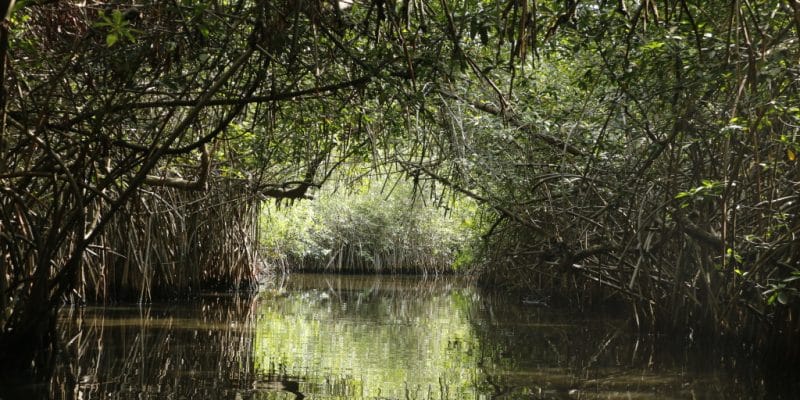 BENIN – In Benin, the Food and Agriculture Organization of the United Nations (FAO) recently signed a contract with the Beninese Ministry of Living Environment and Sustainable Development for the sustainable management of mangrove ecosystems by 2028 in the cities of Grand-Popo, Comè, Ouidah, Bopa, Kpomassé, Abomey-Calavi, Sô-Ava, Aguégués and Sèmè-Kpodji. These councils, all located in the southern part of Benin, have in common the risk of flooding, which affects the farms of 300,000 people and endangers the potential of fauna and flora. Among the natural sites most exposed to climatic shocks is Lake Ahémé, whose mangrove covers an area of 126 km2 with around 70 species of fish and birds. This is why the UN agency based in Rome, Italy, is implementing the project “Strengthening the resilience of human and natural systems to climate change through the conservation and sustainable use of mangrove ecosystems in southern Benin. At a total cost of $70 million (42.6 billion CFA francs), the initiative will be co-financed with $62.8 million (38.2 billion CFA francs) from the Global Environment Facility (GEF) and the Least Developed Countries Fund (LDCF).
BENIN – In Benin, the Food and Agriculture Organization of the United Nations (FAO) recently signed a contract with the Beninese Ministry of Living Environment and Sustainable Development for the sustainable management of mangrove ecosystems by 2028 in the cities of Grand-Popo, Comè, Ouidah, Bopa, Kpomassé, Abomey-Calavi, Sô-Ava, Aguégués and Sèmè-Kpodji. These councils, all located in the southern part of Benin, have in common the risk of flooding, which affects the farms of 300,000 people and endangers the potential of fauna and flora. Among the natural sites most exposed to climatic shocks is Lake Ahémé, whose mangrove covers an area of 126 km2 with around 70 species of fish and birds. This is why the UN agency based in Rome, Italy, is implementing the project “Strengthening the resilience of human and natural systems to climate change through the conservation and sustainable use of mangrove ecosystems in southern Benin. At a total cost of $70 million (42.6 billion CFA francs), the initiative will be co-financed with $62.8 million (38.2 billion CFA francs) from the Global Environment Facility (GEF) and the Least Developed Countries Fund (LDCF).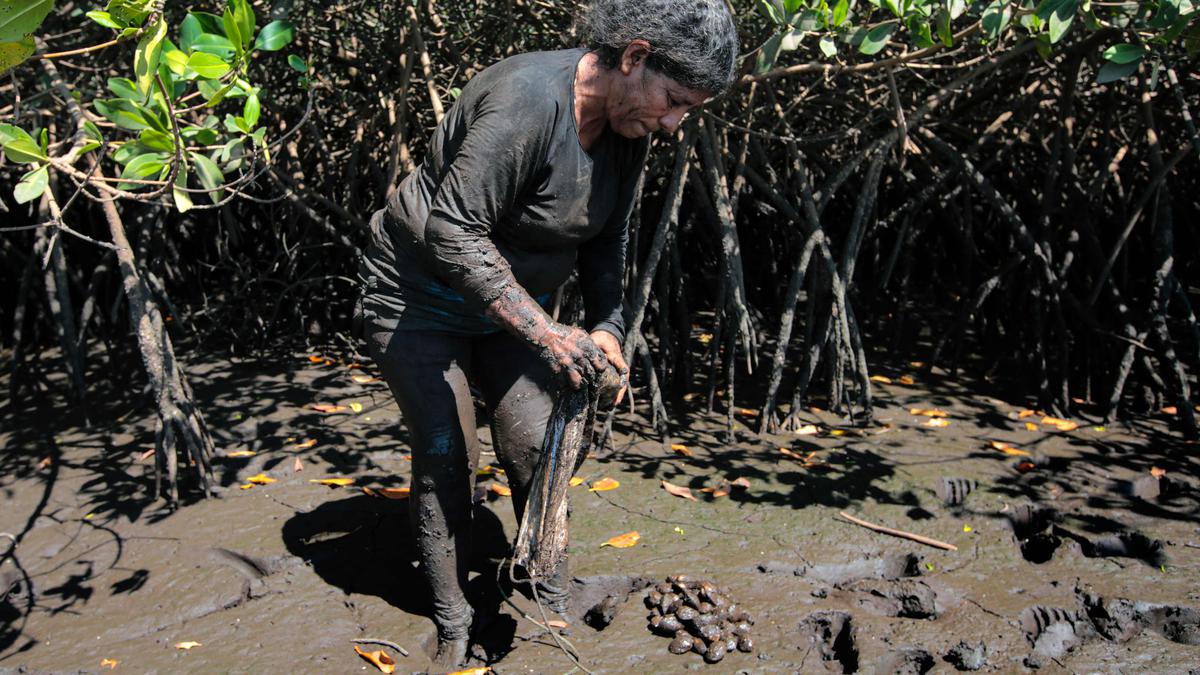 NICARAGUA – From a young age, Elena Martinez and other female residents of Aserradores, a small fishing community in eastern Nicaragua, learn to navigate the dense mangrove forest to extract a black mollusc from deep under the mud.Every few days, they leave home at dawn to row about two kilometres (1.2 miles) in a fishing boat to the mangroves, where they crawl through gnarly branches knee-deep in mud, digging for the delicacy by hand. While keeping food on the table, the women also help conserve the mangrove forest — a natural barrier that harbours countless animal species and protects coastal settlements from floods, tidal waves and hurricane winds. In several hours they each gather a small pile of the mollusc known to science as Anadara tuberculosa — some for home consumption, but most to sell in town. The cockle is a popular menu item in Nicaragua and famed for purported aphrodisiac qualities.
NICARAGUA – From a young age, Elena Martinez and other female residents of Aserradores, a small fishing community in eastern Nicaragua, learn to navigate the dense mangrove forest to extract a black mollusc from deep under the mud.Every few days, they leave home at dawn to row about two kilometres (1.2 miles) in a fishing boat to the mangroves, where they crawl through gnarly branches knee-deep in mud, digging for the delicacy by hand. While keeping food on the table, the women also help conserve the mangrove forest — a natural barrier that harbours countless animal species and protects coastal settlements from floods, tidal waves and hurricane winds. In several hours they each gather a small pile of the mollusc known to science as Anadara tuberculosa — some for home consumption, but most to sell in town. The cockle is a popular menu item in Nicaragua and famed for purported aphrodisiac qualities.